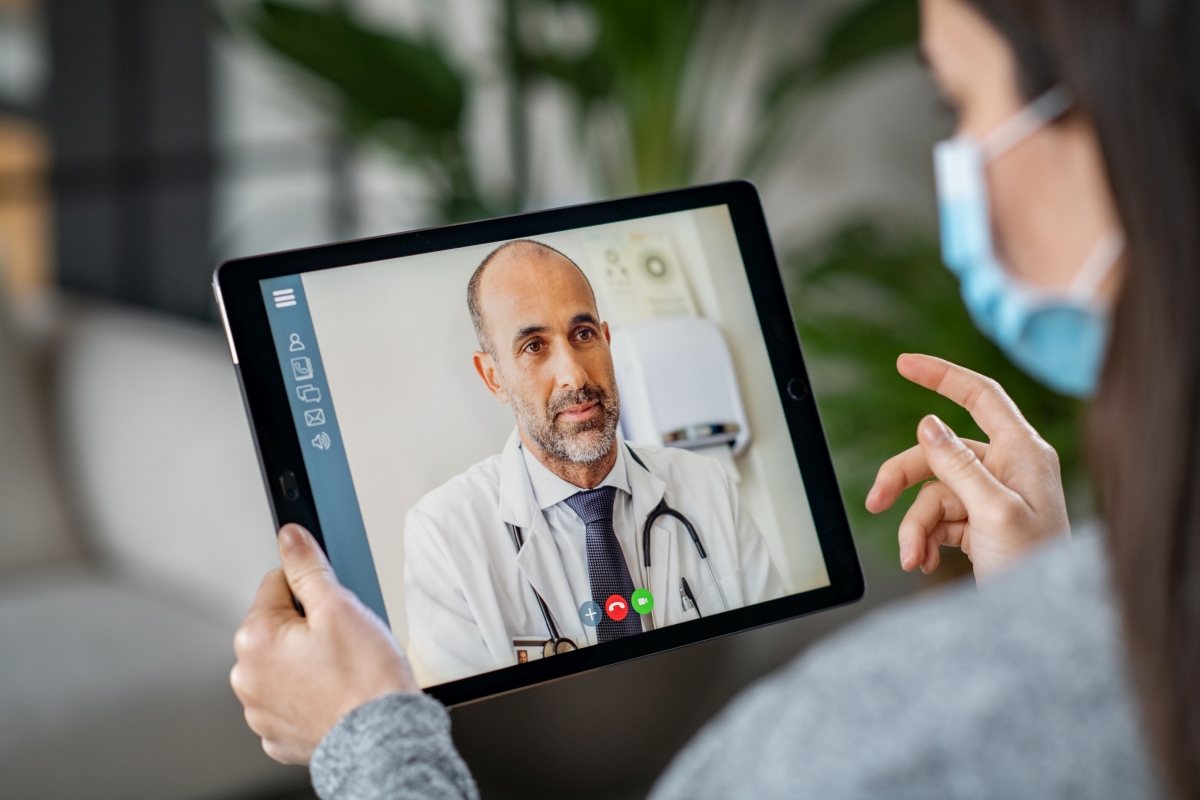Teledoctors vs Standard Medical Care: Which is Better?
Teledoctors vs Standard Medical Care: Which is Better?
Blog Article
Teledoctors: Bridging the Gap In Between Individuals and Doctor
The appearance of teledoctors stands for a significant shift in the health care landscape, providing options to long-standing accessibility issues encountered by individuals and providers alike. By integrating telemedicine into conventional practices, healthcare systems can get to remote and underserved populations, giving important clinical assessments without the barriers of distance and travel.
Surge of Telemedicine

The increase of telemedicine is also fueled by the requirement for economical health care. Medical care systems internationally are under pressure to decrease expenses while keeping quality care, and telemedicine offers a sensible service. By decreasing the need for physical sees, telemedicine lowers overhead expenses for healthcare centers and inevitably reduces the monetary worry on individuals.
In Addition, the COVID-19 pandemic acted as a stimulant, speeding up the adoption of telemedicine techniques. Social distancing procedures and the demand to reduce exposure risk necessitated a shift towards remote assessments, motivating governing bodies to adapt and sustain telehealth services. This change has not only tested telemedicine's efficiency but likewise its prospective to evolve as a staple part of modern-day health care systems.
Benefits for Clients
Mainly, telemedicine enhances access, allowing patients in underserved or remote locations to seek advice from medical care service providers without the requirement for extensive travel. Telemedicine also uses clients the benefit of obtaining clinical guidance and treatment from the convenience of their homes, decreasing the time and price associated with traveling to a medical care center.
Moreover, telemedicine sustains continuity of care by facilitating routine follow-ups and tracking, which are crucial for taking care of chronic problems. Patients can easily set up visits and access healthcare services outside traditional office hours, fitting their hectic lifestyles. This versatility causes boosted patient involvement and adherence to treatment strategies, possibly resulting in far better health outcomes.
Additionally, telemedicine can help minimize the risk of infection transmission, a worry enhanced by the COVID-19 pandemic. By decreasing the need for in-person sees, clients can prevent jampacked waiting rooms and reduce direct exposure to transmittable illnesses. Eventually, telemedicine empowers individuals by supplying timely, reliable, and individualized health care services.
Advantages for Suppliers
For medical care suppliers, telemedicine uses substantial advantages that boost the performance and reach of their technique. By leveraging electronic technology, companies can prolong their solutions to a wider group, consisting of those in underserved or remote locations. This not only reduces geographical obstacles yet likewise optimizes patient retention and procurement by making medical care more available.
An additional secret advantage is the decrease in above expenses. With telemedicine, the need for physical area diminishes, permitting carriers to minimize property and operational expenditures. Furthermore, telemedicine promotes better time monitoring by minimizing the demand for commuting and enabling for even more versatile organizing. This versatility can bring about enhanced patient appointments per day, consequently enhancing revenue potential.
Telemedicine additionally cultivates a more joint setting for healthcare companies. teledoctors. It allows seamless sharing of patient information amongst professionals, boosting analysis accuracy and therapy end results. Additionally, digital systems can integrate with you can try these out electronic wellness documents (EHRs), enhancing data accuracy and streamlining management jobs
Furthermore, telemedicine improves individual satisfaction, which is vital for provider online reputation and success. By using timely and hassle-free treatment, carriers can boost client commitment and involvement, even more reinforcing the provider-patient partnership.
Conquering Challenges
While telemedicine provides various advantages for medical care carriers, it likewise offers obstacles that require cautious consideration. Medical care companies have to adhere to strict laws like HIPAA to shield delicate info, therefore calling for financial investment in protected systems and ongoing team training. teledoctors.
Another difficulty is the digital divide, which can hinder access to telemedicine solutions. Not all patients have equivalent accessibility to the necessary technology or internet connection, especially those in underserved or rural locations. This disparity can aggravate existing health care inequalities, making it critical for carriers to discover alternative options, such as collaborations with area companies, to connect this gap.
Additionally, there are limitations in performing physical examinations remotely. Particular conditions call for in-person analysis, highlighting the requirement for a hybrid model that integrates telemedicine with traditional check outs. Suppliers must navigate these difficulties by establishing methods to identify when telemedicine is ideal and making certain seamless changes between virtual and in-person care.
Future of Health Care
The future of health care is positioned for a transformative advancement, driven by the quick integration of technology and technology. Central to this change is the surge of telemedicine, which is redefining how clinical services are accessed and supplied. With innovations in electronic interaction, telehealth platforms are becoming more innovative, using real-time appointments, remote individual surveillance, and personalized treatment plans. This not just boosts individual benefit however additionally broadens access to health care, specifically in rural and underserved locations.
Synthetic knowledge (AI) and artificial intelligence are also readied to play crucial duties. These technologies can analyze substantial quantities of information, supplying anticipating understandings into person wellness, boosting diagnostic precision, and customizing treatment strategies. AI-driven tools can augment health care companies' capacities, resulting in even more informed decision-making and much better patient results.
In addition, wearable innovation and Internet of Medical Points (IoMT) tools are revolutionizing patient involvement and proactive health and wellness administration. These tools allow continual health and wellness surveillance, allowing for very early check my blog discovery of possible issues and prompt treatments.
As these modern technologies remain to advancement, they guarantee to develop a more efficient, accessible, and patient-centric health care system, ultimately bridging the void between people and doctor. - teledoctors
Verdict
Teledoctors are transforming healthcare by significantly boosting availability and efficiency with remote appointments. This development supports people in underserved locations by supplying timely clinical recommendations without needing physical check outs, hence boosting client involvement and connection of treatment. Doctor profit from much more effective time management and improved cooperation opportunities. Regardless of difficulties such as technical obstacles and regulatory concerns, the future of health care appears effective and significantly comprehensive due to the combination of telemedicine right into pop over here typical treatment models.

As telemedicine continues to reshape medical care distribution, patients stand to acquire dramatically from this change. Mainly, telemedicine boosts availability, allowing clients in underserved or remote locations to speak with healthcare suppliers without the requirement for extensive traveling. Telemedicine additionally supplies clients the convenience of obtaining clinical advice and treatment from the convenience of their homes, decreasing the time and price connected with taking a trip to a healthcare center.
Ultimately, telemedicine equips patients by giving timely, effective, and individualized healthcare services.
Report this page